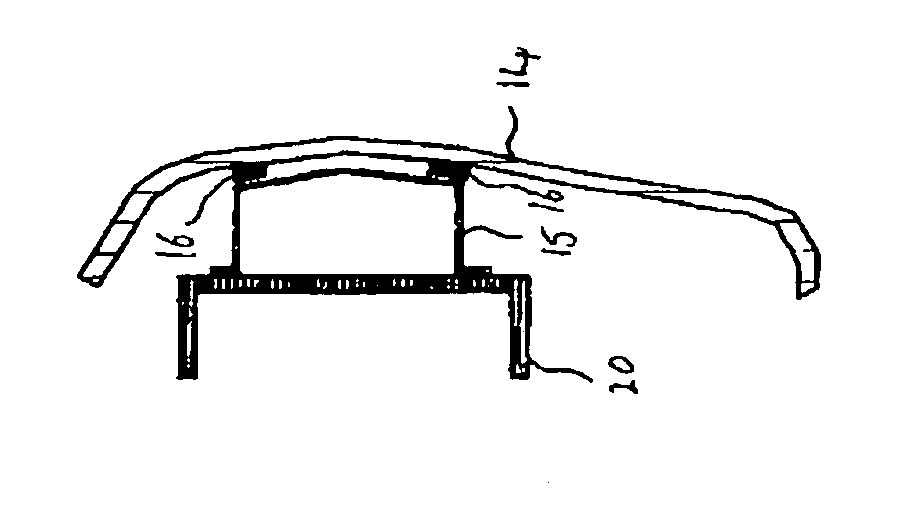Automobile assembly
a technology for automobiles and components, applied in the direction of stationary conduit assemblies, domestic objects, understructures, etc., can solve the problems of not considering the use of adhesives to bond reinforcing components, the design and structural effectiveness of reinforcing components is reduced, and the design and structural effectiveness of reinforcing components are reduced. , the effect of reducing the design and structural effectiveness of the reinforcing member
- Summary
- Abstract
- Description
- Claims
- Application Information
AI Technical Summary
Benefits of technology
Problems solved by technology
Method used
Image
Examples
Embodiment Construction
In a preferred embodiment, the structural member and reinforcing member have complementary shapes, at least in part and they are bonded together by application of adhesive on either or both of the complementary parts of the members so as to bond the two parts together over an area which is significantly greater than the area associated with joining the parts by mechanical fixing. Advantageously, bonding the structural member and reinforcing member in this manner reduces the concentration of stress at the joints between the two members. Preferably, the structural member and reinforcing member are bonded together by a continuum of adhesive along the complementary surfaces on the two members in order to reduce the concentration of stress at a particular point when load is applied to the assembly.
The automobile assembly, for example a FEC and a bumper system, is suitably manufactured employing known techniques for producing the structural member for example compression or injection m...
PUM
| Property | Measurement | Unit |
|---|---|---|
| surface energy | aaaaa | aaaaa |
| surface energy | aaaaa | aaaaa |
| surface energy | aaaaa | aaaaa |
Abstract
Description
Claims
Application Information
 Login to View More
Login to View More - R&D
- Intellectual Property
- Life Sciences
- Materials
- Tech Scout
- Unparalleled Data Quality
- Higher Quality Content
- 60% Fewer Hallucinations
Browse by: Latest US Patents, China's latest patents, Technical Efficacy Thesaurus, Application Domain, Technology Topic, Popular Technical Reports.
© 2025 PatSnap. All rights reserved.Legal|Privacy policy|Modern Slavery Act Transparency Statement|Sitemap|About US| Contact US: help@patsnap.com



